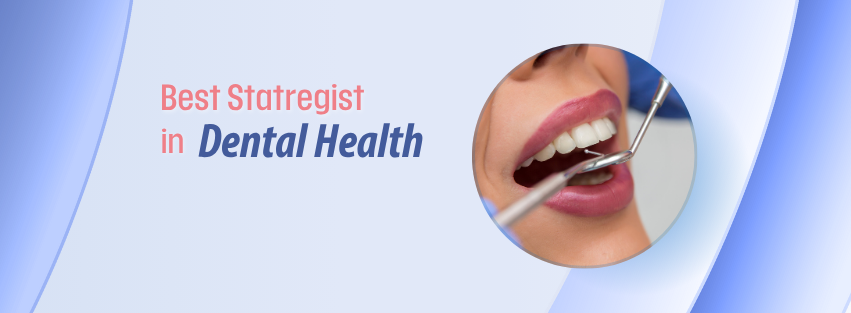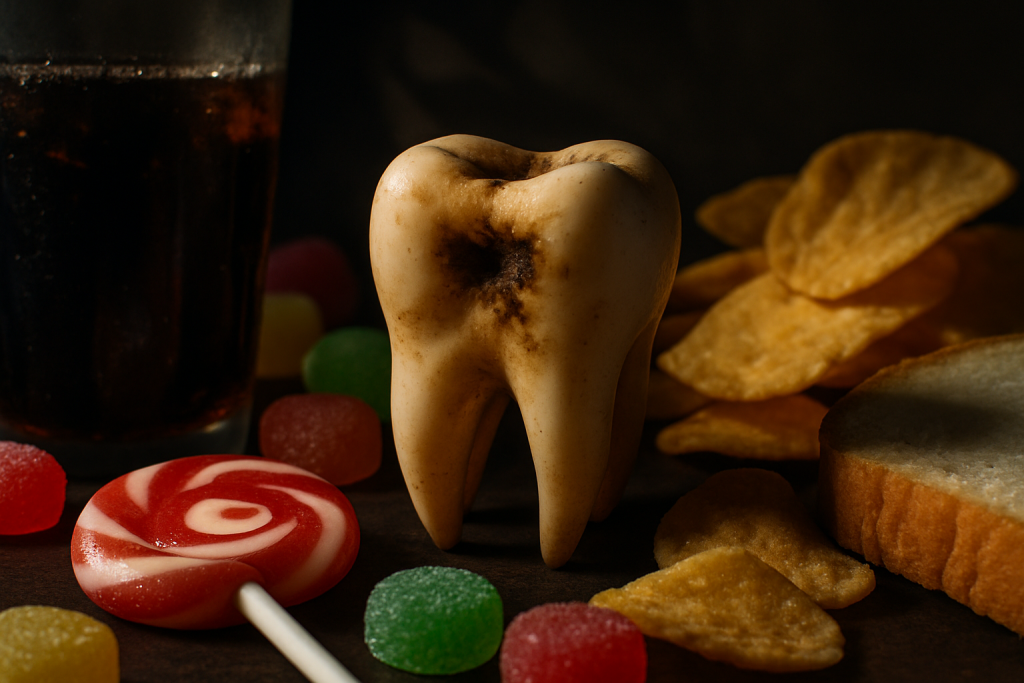
Introduction: That Sneaky Afternoon Snack That Left You With a Cavity (and how to outsmart it)
I’ll never forget the day I bit into a seemingly harmless granola bar and felt that sharp, familiar twinge in my molar. A week later, I was in the dentist’s chair, squirming as she drilled into what she called “a classic case of sugar-induced decay.” As she worked, I couldn’t help but think: How did this happen? I eat fairly healthy—mostly whole foods, lots of veggies, and I even switched to sparkling water instead of soda.
But then she asked about my snacking habits, and I sheepishly admitted to grabbing handfuls of dried mangoes and crackers throughout the day. Her response? “It’s not just about what you eat—it’s about how often and how long it sticks around.” That conversation sparked my deep dive into the world of tooth decay, and what I learned shocked me.
Many “healthy” foods are just as guilty as candy when it comes to wrecking your smile. In this presentation, I’m going to walk you through the types of food most likely to cause tooth decay, not just listing them but explaining why they’re problematic from a real-life perspective. We’ll break down the science simply, share surprising culprits (like that “innocent” granola bar), and give you practical swaps so you don’t end up in the dentist’s chair wondering, “How did I get here?”
The Sugar Trap – It’s Not Just Candy Anymore.
Let’s start with the obvious: sugary foods are decay’s best friends. But here’s the twist—it’s not just the obvious culprits like lollipops or chocolate bars. In fact, some of the worst offenders are disguised as “healthy” or “convenient” options. For example, dried fruits like raisins, apricots, and mangoes are packed with natural sugars, but they’re also incredibly sticky.
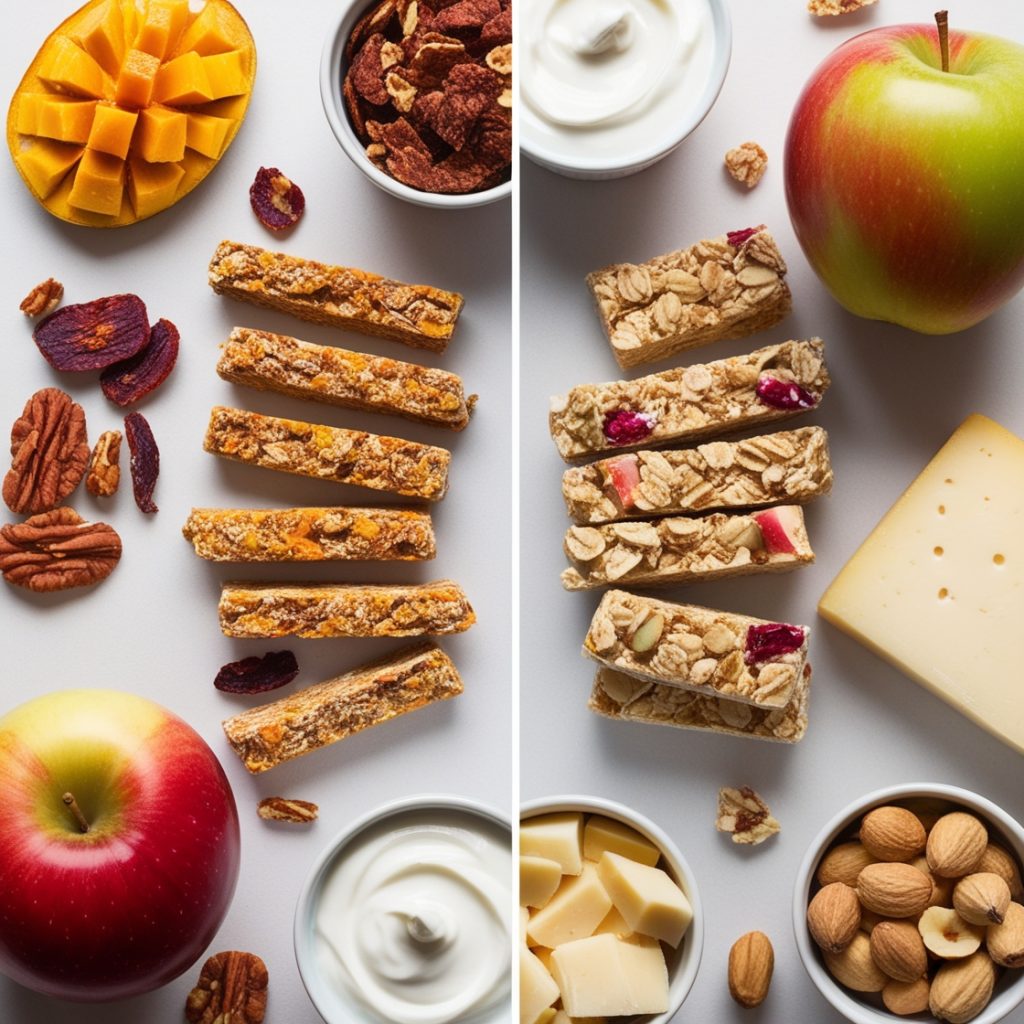
When you eat them, they cling to your teeth like glue, creating a feast for bacteria that live in your mouth. These bacteria feed on sugars and produce acids that erode enamel—the hard, protective outer layer of your teeth. Over time, this erosion creates tiny holes (cavities), and if left untreated, it can lead to pain, infections, and even tooth loss.
But here’s what really surprised me: even foods with “no added sugar” can be problematic if they’re high in refined carbohydrates, like white bread, pasta, or crackers. Your saliva breaks these carbs down into simple sugars, which then become fuel for decay-causing bacteria.
So, that afternoon handful of pretzels or that slice of toast you grabbed while rushing out the door? It’s essentially a slow-release sugar bomb for your mouth. And if you’re snacking frequently—say, grazing on trail mix or cereal throughout the day—you’re essentially giving bacteria a never-ending buffet, keeping acid levels high and enamel under constant attack.
Acidic Foods – The Silent Enamel Eroders:
While sugar feeds the bacteria that cause decay, acidic foods and drinks deliver a one-two punch by directly weakening your enamel, making it easier for bacteria to penetrate. Citrus fruits like oranges, lemons, and grapefruits are loaded with vitamin C, but they’re also highly acidic.
Sipping on lemon water all day or eating grapefruit for breakfast might seem healthy, but it bathes your teeth in acid, slowly dissolving the minerals that keep enamel strong. I used to start my mornings with a glass of warm lemon water, thinking it was great for digestion—until my dentist pointed out that my enamel was starting to look thin.
Similarly, soda (even diet soda), sports drinks, and fruit juices are major offenders. A single can of cola contains both sugar and phosphoric acid, which is like pouring battery acid on your teeth. But it’s not just beverages—vinegary salad dressings, pickles, and even wine can lower the pH in your mouth, creating an environment where enamel literally melts away.
Here’s the scary part: once enamel is gone, it doesn’t grow back. Your body can remineralize it slightly with the help of fluoride, but severe erosion is permanent. That’s why dentists warn against constant sipping of acidic drinks or sucking on sour candies. If you’re like me and enjoy a zesty vinaigrette or a glass of wine with dinner, I’ll share tips later for minimizing damage without giving up the flavors you love.
Sticky, Chewy, and Gummy – The Foods That Refuse to Let Go.
If sugar and acid are decay’s partners in crime, sticky foods are the getaway drivers that help them escape your mouth’s natural defenses. I’m talking about anything that clings to your teeth long after you’ve swallowed: caramel, taffy, gummy bears, dried fruit (yes, even those “healthy” ones), and even nut butters like peanut butter or almond butter.
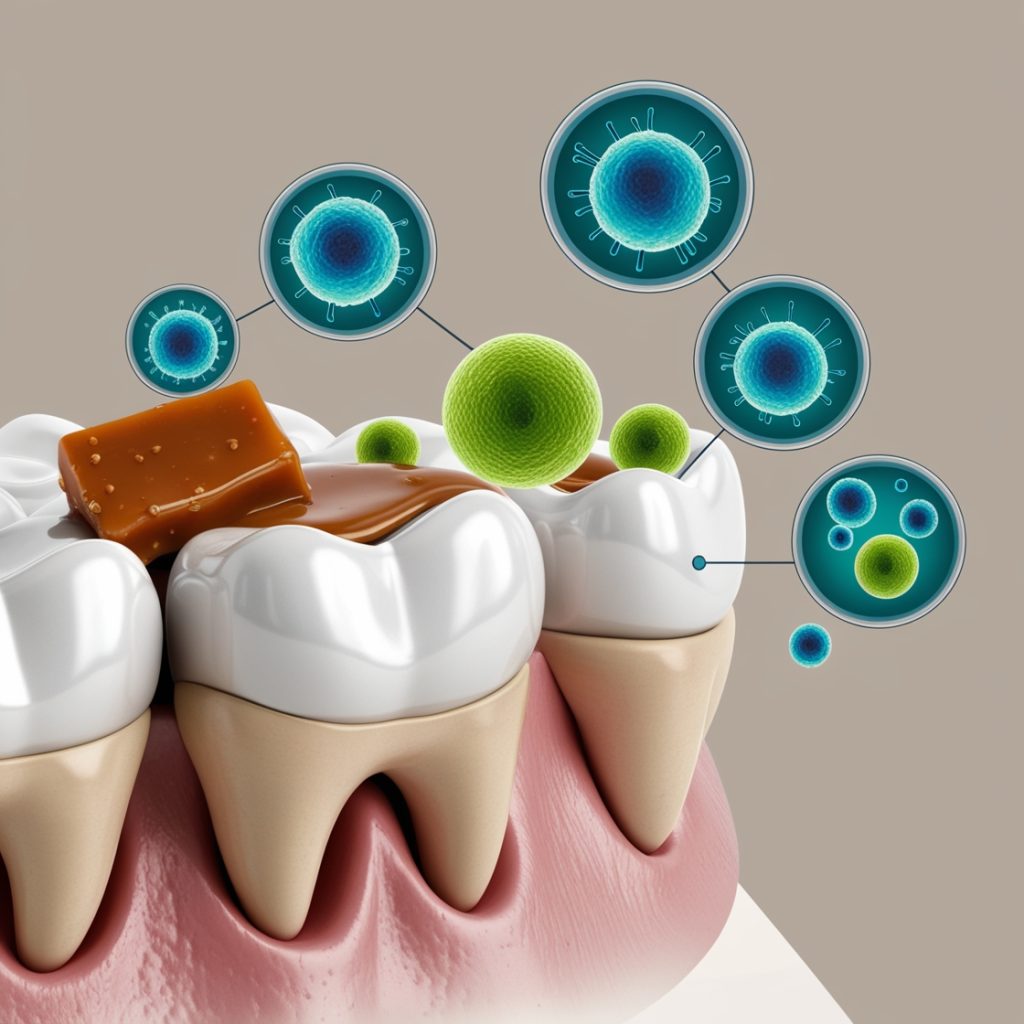
These foods are particularly insidious because they don’t just wash away easily with saliva or water. Instead, they nestle into the grooves of your molars, between teeth, and along the gumline, creating a protective barrier for bacteria. Bacteria then have hours to feast on the sugars trapped there, producing acid that eats away at enamel.
I learned this the hard way when I started making my own “energy balls” with dates, nuts, and honey—they tasted amazing, but my dentist found cavities in hard-to-reach spots shortly after. Even seemingly innocent foods like bananas or oatmeal can become sticky when chewed, especially if they’re dried or processed.
Let’s not forget starchy foods like potato chips or popcorn, which break down into a paste-like substance that seeps into every crevice. If you’ve ever felt like you need to floss immediately after eating something, that’s your mouth’s way of saying, “This is a clingy offender!”.
The Sneaky “Healthy” Culprits and Liquid Decay Traps:
Now, let’s talk about foods that fly under the radar. Many people assume that if something is labeled “organic,” “natural,” or “low-fat,” it’s automatically tooth-friendly—but that’s not true. For instance, flavored yogurts often contain as much sugar as a candy bar, and even smoothies can be sugar bombs if they’re loaded with fruit and sweeteners.
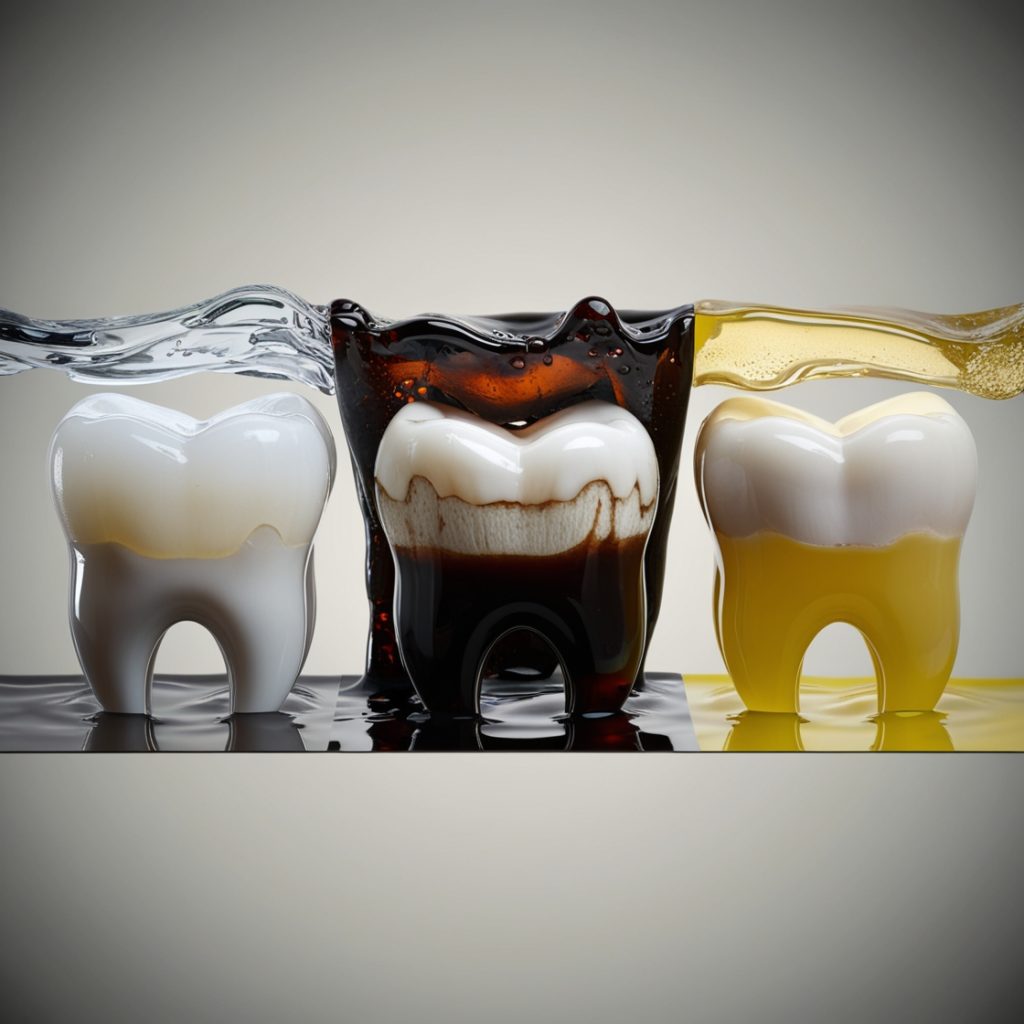
A large smoothie might seem like a nutrient powerhouse, but if you sip it slowly over an hour, you’re essentially giving your teeth a sugar bath. Similarly, milk has natural sugars (lactose), and while it’s great for calcium, drinking it right before bed without brushing can leave residues that feed bacteria overnight.
Then there are liquid decays in disguise: alcohol, especially beer and sweet wines, combines sugar and acidity; coffee and tea can stain teeth and dry out your mouth (reducing saliva’s protective effects); and even sparkling water, while better than soda, is often acidic enough to erode enamel if consumed constantly.
I used to think my afternoon matcha latte was harmless, but when I switched to a sweeter blend, I noticed more sensitivity—a sign that my enamel was weakening. The key takeaway? Read labels carefully, be mindful of how long food lingers in your mouth, and remember that frequency matters just as much as quantity.
Conclusion: Knowledge Is Power—But habits are everything.
After spending years researching and tweaking my own habits, I’ve learned that avoiding decay isn’t about deprivation—it’s about smart strategies. The foods most likely to cause tooth decay are those high in sugar or acid, especially when they’re sticky or sipped slowly. But here’s the good news: you don’t need to live on plain chicken and water.
By understanding why certain foods are problematic, you can make informed swaps. For example, choose fresh fruit over dried, opt for whole-grain bread instead of white (it breaks down slower), and drink acidic beverages through a straw to minimize contact with teeth. Most importantly, maintain a rock-solid oral hygiene routine: brush twice a day with fluoride toothpaste, floss daily, and see your dentist regularly. They can spot early signs of decay that you might miss.
If you’re worried about past damage, don’t panic—small cavities can often be reversed with fluoride treatments if caught early. At the end of the day, your teeth are designed to last a lifetime. With a little awareness and consistent care, you can enjoy your favorite foods without letting them steal your smile.
